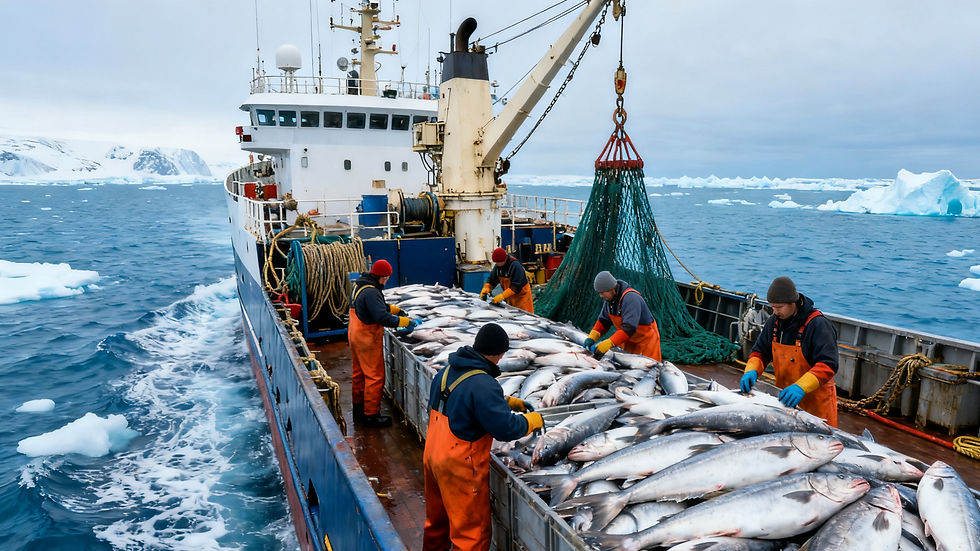Ecuadorian Shrimp Exports to Near 1.5 Million Metric Tons in 2025: Driven by Tech & Expansion, Omarsa Leads the Industry
- Easy Seafood

- Sep 18
- 2 min read
In 2025, Ecuador's shrimp exports will exceed 1.4 million metric tons and approach the 1.5 million metric ton mark, far surpassing the previous estimate of 1.37 million metric tons; exports are expected to grow by another 10%-15% in 2026, showing a clear high-growth trend.
1. Core Drivers of Growth: Technological Upgrading + Industry Consolidation
Efficiency Boost from Tech: 20% of shrimp farms have launched upgrades (including intelligent water quality monitoring and high-density recirculating aquaculture equipment), and 60% of the country's aquaculture area will achieve modernization in the future. The yield per hectare of traditional farms is 4,000-5,000 pounds, while that of upgraded modern farms reaches 10,000-15,000 pounds per hectare, a 3-4 fold increase in yield.
Resource Concentration: Large enterprises are merging small and medium-sized shrimp farms, concentrating resources in leading enterprises and unlocking production potential.
2. Omarsa's Layout: Yield Targets + Industrial Chain Extension
Yield Goals: Targets 140,000 metric tons in 2025 and strives for 180,000 metric tons in 2026.
Aquaculture Area Expansion: Currently has 7,000 hectares of aquaculture area, and plans to increase it to 10,000 hectares by the end of 2025; 700-800 hectares of new farms will be put into operation in October-November 2025, with seedlings sown in October and the first harvest expected in January-February 2026.
Industrial Chain Enhancement: In response to demand from the US market, it is investing in production lines for headless and shellless value-added products to seize high-value-added market share.
3. Potential Challenges: Market Differentiation + Production Capacity Bottlenecks
Market Differentiation: Export growth to Europe and the US is significant (US demand drives value-added product needs), while sales growth to China has slowed down, showing obvious regional differences in demand.
Production Capacity Bottlenecks: Local value-added production capacity cannot yet fully meet US demand. Some Ecuadorian shrimp need to be sent to Asia/Latin America for processing before being re-exported to Europe and the US. These products still enjoy the 15% local tariff rate preference, serving as a transitional solution.
4. Global Impact: Stable Supply + Competitive Adjustments
The high growth of Ecuadorian shrimp will inject stable supply into the global shrimp market, while the cost advantages brought by technological upgrading may strengthen its voice in the mid-to-high-end market. Enterprises like Omarsa need to address challenges such as demand fluctuations and cost changes, and balance "scale expansion" and "quality upgrading" in the future.




Comments